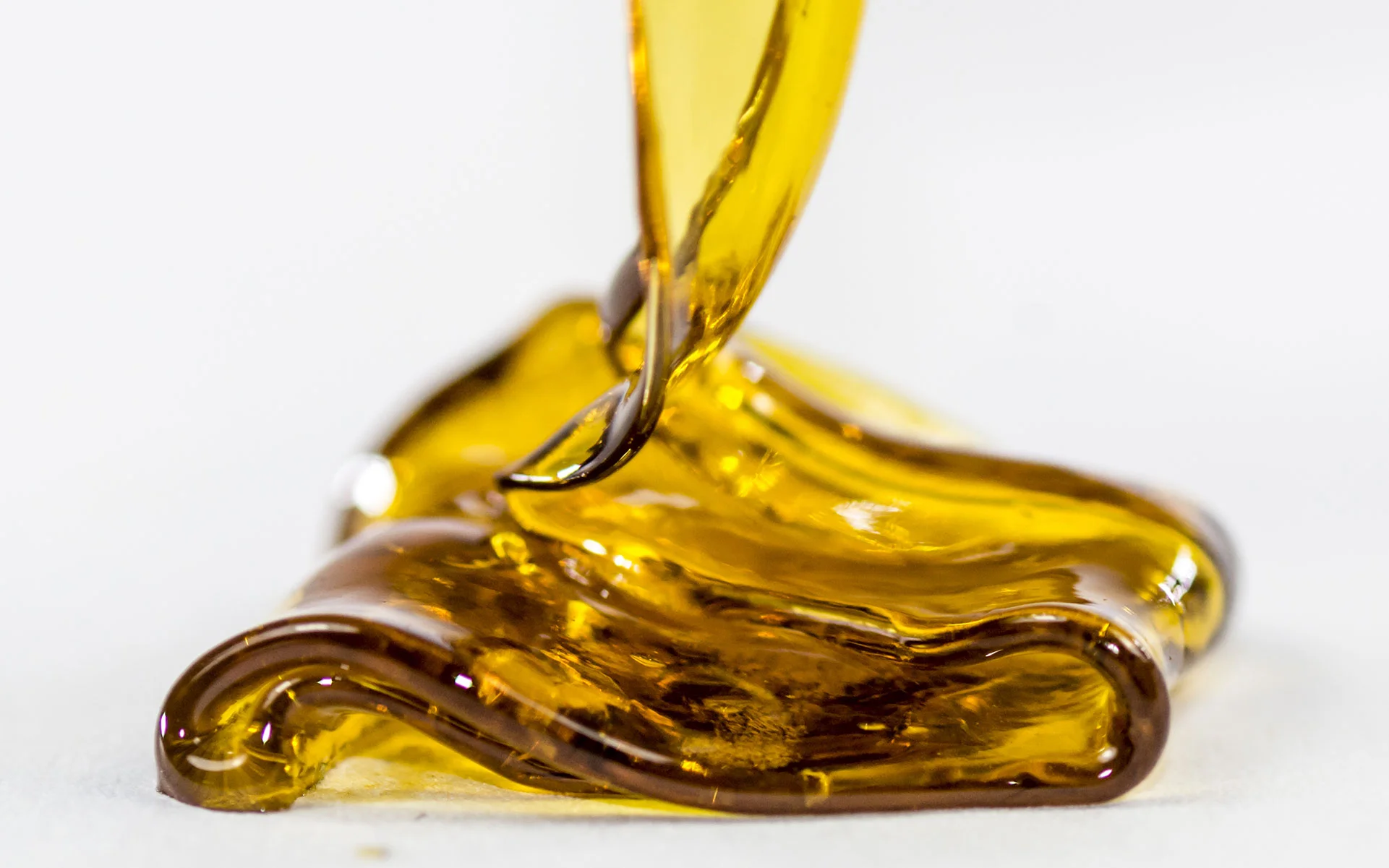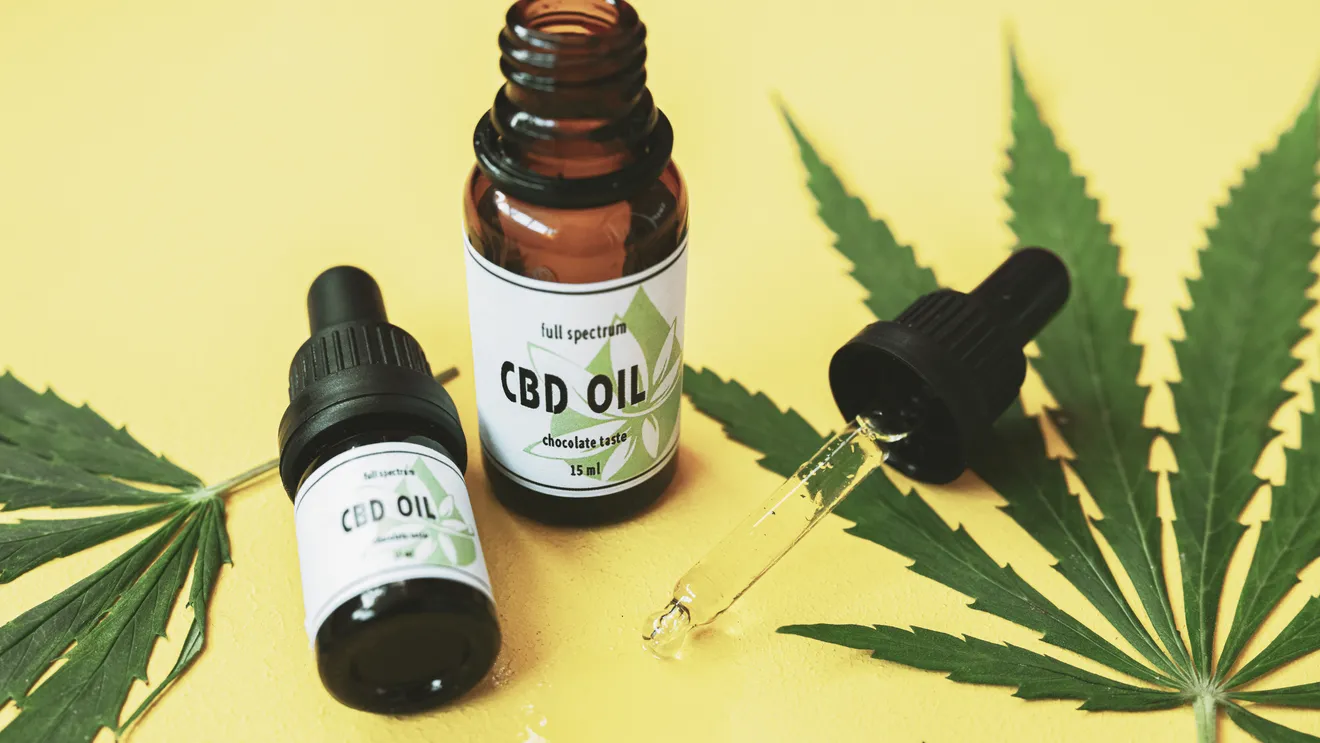In recent years, the popularity of cannabis extracts has surged across Canada, reflecting a significant shift in consumer preferences and the evolving landscape of cannabis legalization. With the introduction of regulations permitting both medical and recreational cannabis use, Canadians have increasingly turned to extracts as a preferred method of consumption. This surge in popularity can be attributed to several factors, including the convenience, potency, and versatility that extracts offer compared to traditional smoking methods.
Among the diverse array of cannabis extracts available, full spectrum oil has emerged as a standout option, captivating the interest of both medical patients and recreational users alike. Full spectrum oil, distinguished by its comprehensive composition capturing the complete profile of cannabinoids, terpenes, and flavonoids present in the cannabis plant, represents a holistic approach to cannabis consumption. Understanding the different types of cannabis extracts, including full spectrum oil, is paramount for consumers navigating the expanding market of cannabis products.
By familiarizing themselves with the distinctions between extracts such as distillates, isolates, and full spectrum extracts, consumers can make informed decisions tailored to their preferences and desired effects. This knowledge empowers consumers to optimize their cannabis experience, ensuring they select products that align with their individual needs and goals while maximizing the potential benefits of cannabis consumption.
Understanding Cannabis extracts
Cannabis extracts represent a concentrated form of the cannabis plant, containing high levels of cannabinoids, terpenes, and other bioactive compounds. These extracts are typically produced through various extraction methods, such as solvent-based extraction, CO2 extraction, or solventless methods like rosin pressing. The resulting extracts vary in potency, composition, and application, offering consumers a diverse range of options to explore. Among the spectrum of cannabis extracts, three primary categories stand out: distillates, isolates, and full spectrum extracts.

Distillates undergo a process of distillation to isolate specific cannabinoids, resulting in a potent and versatile product suitable for various consumption methods. Isolates consist of pure cannabinoids extracted from the plant, devoid of other compounds, allowing for precise dosing and targeted effects. On the other hand, full spectrum extracts preserve the complete profile of compounds found in the original plant material, offering a comprehensive and nuanced cannabis experience. These extracts capture the synergistic effects of multiple compounds working together, commonly referred to as the entourage effect, which enhances therapeutic benefits and contributes to a holistic cannabis experience.
The advantages of cannabis extracts over traditional consumption methods are significant. Extracts provide a more concentrated and potent form of cannabis, allowing for precise dosing and consistent effects. Additionally, extracts offer discreet consumption options, making them ideal for consumers who prefer to avoid the odour and smoke associated with traditional smoking. Furthermore, extracts can be infused into a variety of products, including edibles, topicals, and tinctures, providing versatility and accessibility to consumers with diverse preferences. This versatility extends to medical applications, where extracts offer targeted relief for specific symptoms or conditions. Overall, cannabis extracts offer a convenient and potent alternative to traditional consumption methods, appealing to a wide range of consumers seeking therapeutic relief or recreational enjoyment.
Exploring Full Spectrum oil
Exploring full spectrum oil unveils a comprehensive understanding of this particular cannabis extract and its unique attributes. Full spectrum oil, often referred to as full spectrum cannabis oil or FSE, stands out among cannabis extracts due to its inclusive composition. Unlike isolates or distillates, full spectrum oil encompasses the full spectrum of compounds naturally occurring in the cannabis plant, offering a holistic representation of its therapeutic potential. This means that besides cannabinoids, such as THC and CBD, full spectrum oil also contains terpenes and flavonoids, contributing to its distinct aroma, flavour, and effects.
The components of full spectrum oil contribute to its richness and complexity. Cannabinoids, the primary active compounds in cannabis, play a crucial role in the therapeutic effects of full spectrum oil. These include well-known cannabinoids like THC and CBD, as well as lesser-known ones such as CBG and CBC. Terpenes, aromatic molecules found in various plants including cannabis, not only provide aroma and flavour but also interact synergistically with cannabinoids to modulate their effects. Additionally, flavonoids, another group of plant compounds with antioxidant and anti-inflammatory properties, further enhance the therapeutic potential of full spectrum oil.
The process of making full spectrum oil involves extracting the desired compounds from the cannabis plant while preserving their natural balance. This typically involves using solvent-based extraction methods such as ethanol or CO2 extraction, where solvents are used to dissolve the cannabinoids, terpenes, and flavonoids from the plant material. The resulting extract is then purified to remove any residual solvents and impurities, ensuring a clean and potent final product. Alternatively, solventless methods like rosin pressing can also be used to create full spectrum extracts without the need for chemical solvents, providing a more natural and artisanal approach to extraction.
When comparing full spectrum oil to other extracts, several benefits become apparent. Unlike isolates, which contain only a single cannabinoid, or distillates, which may lack the synergy of multiple compounds, full spectrum oil offers a more holistic and nuanced cannabis experience. The presence of a diverse array of cannabinoids, terpenes, and flavonoids in full spectrum oil contributes to the entourage effect, where these compounds work together synergistically to enhance therapeutic benefits and minimize potential adverse effects. This comprehensive profile sets full spectrum oil apart, making it a preferred choice for consumers seeking a well-rounded and effective cannabis extract.
Full Spectrum oil vs. CBD oil
When comparing full spectrum oil to CBD oil, it’s essential to understand the distinctions between these two popular cannabis extracts. CBD oil, often derived from hemp plants, contains high levels of cannabidiol (CBD) and minimal amounts of THC. It’s typically produced through extraction methods that isolate CBD from the plant material, resulting in a product that predominantly features this cannabinoid. CBD oil has gained widespread recognition for its potential therapeutic benefits, including relief from pain, anxiety, inflammation, and seizures, without the psychoactive effects associated with THC.
In contrast, full spectrum oil encompasses a broader spectrum of compounds found in the cannabis plant, including not only CBD but also THC, other cannabinoids, terpenes, and flavonoids. This comprehensive composition distinguishes full spectrum oil from CBD oil, offering a more holistic and nuanced cannabis experience. The presence of multiple cannabinoids and terpenes in full spectrum oil contributes to the entourage effect, where these compounds synergistically enhance therapeutic benefits and modulate the effects of CBD and THC. As a result, full spectrum oil may offer a broader range of effects compared to CBD oil alone, making it suitable for consumers seeking a comprehensive and well-rounded cannabis experience.

Which one is better for different purposes depends on individual preferences, health goals, and tolerance to THC. CBD oil may be preferred by those who seek the specific benefits of CBD without the psychoactive effects of THC or who are subject to drug testing and wish to avoid any trace of THC in their system. On the other hand, full spectrum oil may be more suitable for consumers seeking a holistic approach to cannabis consumption, as it offers a broader spectrum of compounds that work synergistically to enhance therapeutic effects.
Additionally, full spectrum oil may be more effective for certain conditions or symptoms due to the entourage effect, making it a preferred choice for those seeking comprehensive relief. Ultimately, the decision between full spectrum oil and CBD oil should be based on individual preferences, health considerations, and desired effects, with careful consideration of the potential benefits and limitations of each extract.
How to use full spectrum oil
When it comes to using full spectrum oil, consumers have several options for administration, each with its own advantages and considerations. One common method is sublingual administration, where a few drops of full spectrum oil are placed under the tongue and held there for a minute or two before swallowing. This allows for rapid absorption of the cannabinoids directly into the bloodstream through the sublingual glands, resulting in faster onset and more consistent effects compared to oral ingestion.
Another popular method is adding full spectrum oil to edibles and beverages, such as smoothies, coffee, or baked goods. Incorporating full spectrum oil into recipes not only masks the earthy taste of cannabis but also allows for discreet consumption, making it ideal for those who prefer to avoid the characteristic aroma of cannabis. However, it’s essential to note that ingesting full spectrum oil orally can result in slower onset and reduced bioavailability compared to sublingual administration, as the cannabinoids must first pass through the digestive system before entering the bloodstream.
Vaping is another option for consuming full spectrum oil, where the oil is heated and vaporized before inhalation. Vaping offers rapid onset of effects and high bioavailability, making it a preferred method for many consumers seeking immediate relief. However, it’s important to use caution when vaping, as there may be health risks associated with inhaling vaporized oils, particularly if additives or thinning agents are present in the product.
When it comes to dosage recommendations for full spectrum oil, there is no one-size-fits-all approach, as individual tolerance and sensitivity to cannabinoids can vary widely. It’s recommended to start with a low dose and gradually increase as needed while monitoring for any adverse effects. Factors such as body weight, metabolism, and the severity of symptoms should also be taken into account when determining the appropriate dosage. Consulting with a healthcare professional or cannabis specialist can provide personalized guidance and support in finding the right dosage for individual needs.
Potential side effects of using full spectrum oil may include dry mouth, dizziness, drowsiness, and changes in appetite or mood, although these effects are typically mild and transient. Additionally, some individuals may experience adverse reactions or allergic responses to certain cannabinoids or other compounds present in the oil. It’s essential to be mindful of these potential side effects and take precautions accordingly, such as starting with a low dose, avoiding driving or operating machinery while under the influence, and staying hydrated.
Pregnant or breastfeeding individuals, as well as those with underlying medical conditions or taking medications, should consult with a healthcare professional before using full spectrum oil to ensure its safety and efficacy for their specific situation. Overall, by understanding the various methods of consumption, dosage recommendations, and potential side effects and precautions associated with full spectrum oil, consumers can make informed decisions and use the product responsibly to maximize its therapeutic benefits while minimizing any risks.
Health Benefits of Full Spectrum oil
Full spectrum oil has garnered attention for its potential health benefits across various areas, including pain management, anxiety and depression relief, neuroprotective properties, and other potential therapeutic applications supported by research. In terms of pain management, cannabinoids found in full spectrum oil, such as THC and CBD, have been shown to interact with the body’s endocannabinoid system, modulating pain perception and inflammation. This makes full spectrum oil a promising option for individuals seeking relief from chronic pain conditions, such as arthritis, neuropathy, or migraines.
Anxiety and depression are among the most common mental health disorders globally, and full spectrum oil has shown promise in alleviating symptoms associated with these conditions. CBD, in particular, has been studied for its anxiolytic and antidepressant effects, with research suggesting that it may help reduce anxiety, improve mood, and promote overall emotional well-being. The synergistic interaction between cannabinoids and terpenes in full spectrum oil may further enhance its efficacy in managing anxiety and depression by addressing multiple underlying mechanisms.

In addition to its effects on pain and mental health, full spectrum oil exhibits neuroprotective properties that may benefit individuals with neurological disorders or cognitive decline. Cannabinoids like CBD have demonstrated neuroprotective effects in preclinical studies, showing potential for mitigating oxidative stress, inflammation, and neuronal damage associated with conditions such as Alzheimer’s disease, Parkinson’s disease, and multiple sclerosis. By protecting against neurodegeneration and promoting brain health, full spectrum oil holds promise as a therapeutic intervention for maintaining cognitive function and improving overall quality of life.
Furthermore, research suggests that full spectrum oil may offer a range of other potential health benefits, supported by its diverse composition of cannabinoids, terpenes, and flavonoids. These include anti-inflammatory effects, antioxidant properties, antiemetic effects, and potential anticancer properties. While further studies are needed to fully understand the mechanisms underlying these effects and establish the efficacy of full spectrum oil for specific health conditions, preliminary research suggests a promising potential for this cannabis extract in promoting overall health and well-being.
Overall, full spectrum oil represents a multifaceted approach to cannabis consumption, offering a comprehensive profile of compounds that may synergistically enhance therapeutic benefits across various health domains. From managing pain and alleviating anxiety to protecting against neurodegeneration and potentially addressing other health conditions, full spectrum oil holds promise as a versatile and effective therapeutic agent. As research continues to uncover the full extent of its therapeutic potential, full spectrum oil may emerge as a valuable tool for enhancing health and improving quality of life for individuals seeking natural alternatives to conventional treatments.
Risks and Considerations
While full spectrum oil offers a range of potential health benefits, it’s essential for consumers to be aware of the potential risks and considerations associated with its use. One primary concern is the potential for adverse effects, including side effects such as dry mouth, dizziness, drowsiness, and changes in appetite or mood. These effects are typically mild and transient, but individuals may experience them to varying degrees depending on factors such as dosage, tolerance, and sensitivity to cannabinoids. Additionally, some individuals may be at greater risk of experiencing adverse reactions or allergic responses to certain compounds present in full spectrum oil, highlighting the importance of starting with a low dose and monitoring for any unwanted effects.
Another consideration is the potential for drug interactions and contraindications when using full spectrum oil, particularly in combination with other medications or substances. Cannabinoids, including THC and CBD, can interact with certain medications by affecting their metabolism and efficacy, potentially leading to adverse effects or unintended consequences. It’s crucial for individuals taking medications to consult with a healthcare professional before using full spectrum oil to ensure compatibility and safety. Additionally, individuals with underlying medical conditions or pregnant or breastfeeding individuals should exercise caution and seek medical advice before using full spectrum oil, as it may not be suitable for everyone.
Safety precautions should also be observed when consuming full spectrum oil to minimize any potential risks or adverse effects. This includes starting with a low dose and gradually increasing as needed while monitoring for any unwanted effects. It’s also important to avoid driving or operating machinery while under the influence of full spectrum oil, as cannabinoids can impair cognitive function and motor skills. Furthermore, consumers should store full spectrum oil securely and out of reach of children and pets to prevent accidental ingestion. By exercising caution and following safety guidelines, individuals can mitigate potential risks and ensure a safe and positive experience with full spectrum oil.
Consumer Tips for Choosing Quality Full Spectrum Oil
When selecting quality full spectrum oil, consumers should consider several factors to ensure they are purchasing a safe and effective product. Firstly, the source of cannabis plays a crucial role in determining the quality of the oil. It’s essential to choose full spectrum oil derived from high-quality, organically grown cannabis plants, preferably from reputable and licensed producers. Organic cultivation practices minimize the risk of exposure to pesticides, herbicides, and other contaminants, resulting in a cleaner and more potent final product.
Secondly, the extraction method used to produce full spectrum oil significantly impacts its quality and potency. Consumers should look for products that have been extracted using safe and reputable methods, such as CO2 extraction or ethanol extraction. These methods ensure the efficient extraction of cannabinoids, terpenes, and flavonoids from the plant material while minimizing the risk of solvent residues or other contaminants in the final product.

Thirdly, third-party testing is essential for verifying the quality, potency, and safety of full spectrum oil. Reputable brands will provide comprehensive lab reports from independent testing laboratories, detailing the cannabinoid content, terpene profile, and presence of any contaminants such as pesticides, heavy metals, or residual solvents. Consumers should review these lab reports carefully to ensure that the product meets their standards for quality and purity.
When purchasing full spectrum oil, there are several red flags to watch out for that may indicate subpar quality or potential safety concerns. These include products that lack detailed labeling or ingredient information, as well as those that make exaggerated health claims or promise unrealistic benefits. Additionally, consumers should be wary of products that are significantly cheaper than others on the market, as this may indicate inferior quality or lack of proper testing and certification.
While there are many brands and products available, some reputable companies stand out for their commitment to quality, transparency, and consumer safety. These brands often prioritize organic cultivation practices, use reputable extraction methods, and provide comprehensive third-party testing to ensure the highest standards of quality and purity. Consumers can research reviews, testimonials, and industry recommendations to identify trusted brands and products that meet their needs and preferences. Ultimately, by considering factors such as the source of cannabis, extraction method, third-party testing, and potential red flags, consumers can make informed decisions and choose quality full spectrum oil that delivers safe and effective therapeutic benefits.
Full Spectrum Oil: An Excellent choice
Exploring the topic of full spectrum oil has provided valuable insights into its composition, potential health benefits, risks, considerations, and factors to consider when choosing a quality product. We began by highlighting the surge in popularity of cannabis extracts in Canada, with a particular focus on full spectrum oil’s comprehensive composition capturing cannabinoids, terpenes, and flavonoids. Understanding the different types of cannabis extracts and the advantages they offer over traditional consumption methods is crucial for informed decision-making.
We delved into the components of full spectrum oil, including cannabinoids, terpenes, and flavonoids, and discussed how it’s made and the benefits it offers compared to other extracts. Full spectrum oil’s holistic approach to cannabis consumption, backed by the entourage effect, sets it apart as a versatile and effective option for individuals seeking therapeutic relief or recreational enjoyment.
It’s essential to recognize the differences between full spectrum oil and CBD oil, considering their unique compositions and effects, to make an informed choice based on individual preferences and health goals. While both extracts offer potential benefits, full spectrum oil’s comprehensive profile may offer a broader range of effects, making it suitable for various purposes.
Understanding the potential risks associated with full spectrum oil, including adverse effects and drug interactions, underscores the importance of responsible use and consulting with a healthcare professional before incorporating it into one’s wellness regimen. By following safety precautions and choosing quality products from reputable brands, consumers can minimize risks and maximize the potential benefits of full spectrum oil.
In closing, it’s essential to emphasize the importance of understanding full spectrum oil as a valuable tool for enhancing health and well-being. As research continues to uncover its therapeutic potential and regulations evolve to ensure quality and safety, consumers are encouraged to explore full spectrum oil responsibly and legally. By educating themselves, making informed decisions, and prioritizing safety, individuals can unlock the full benefits of this versatile cannabis extract and optimize their wellness journey.





